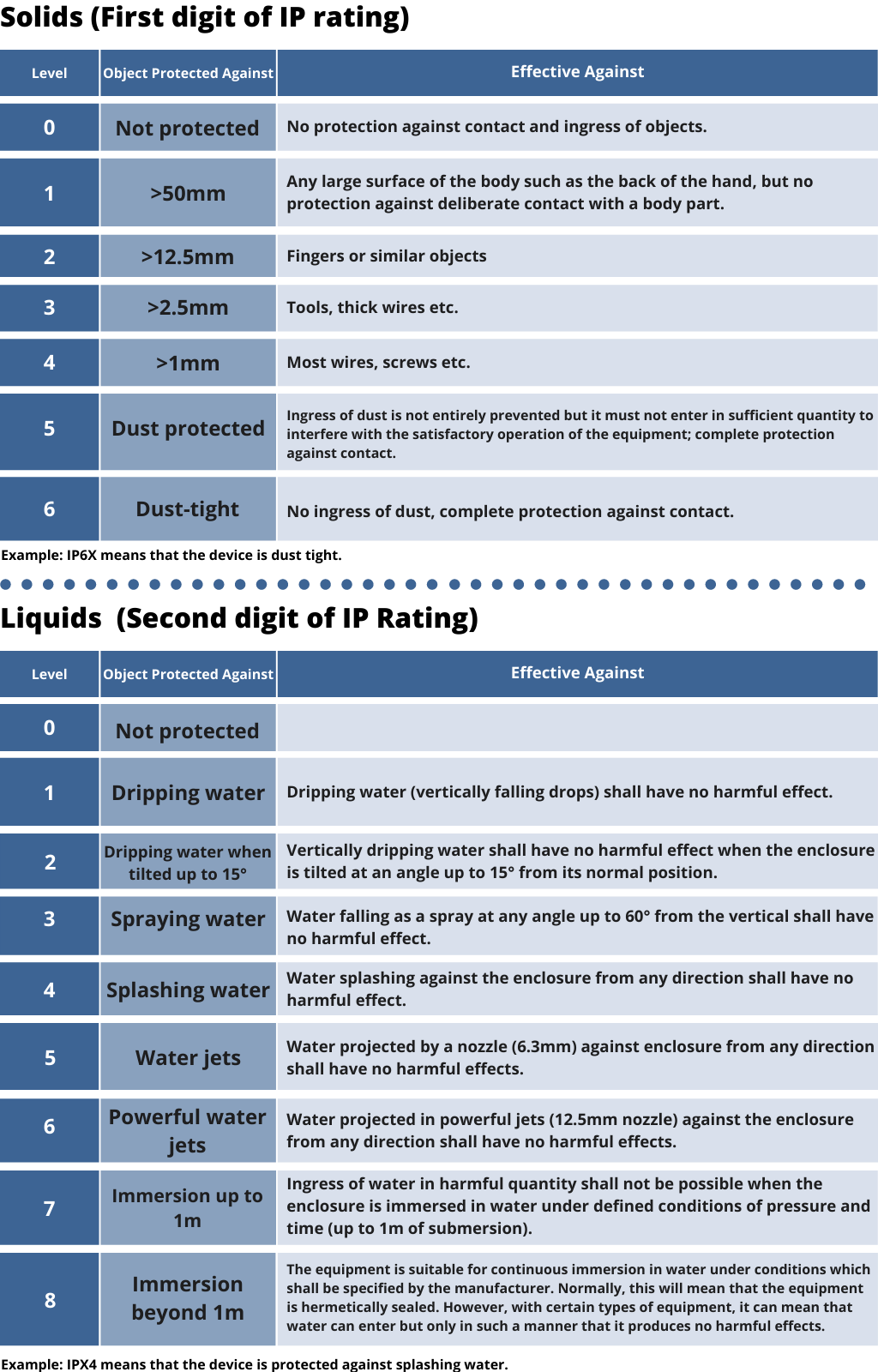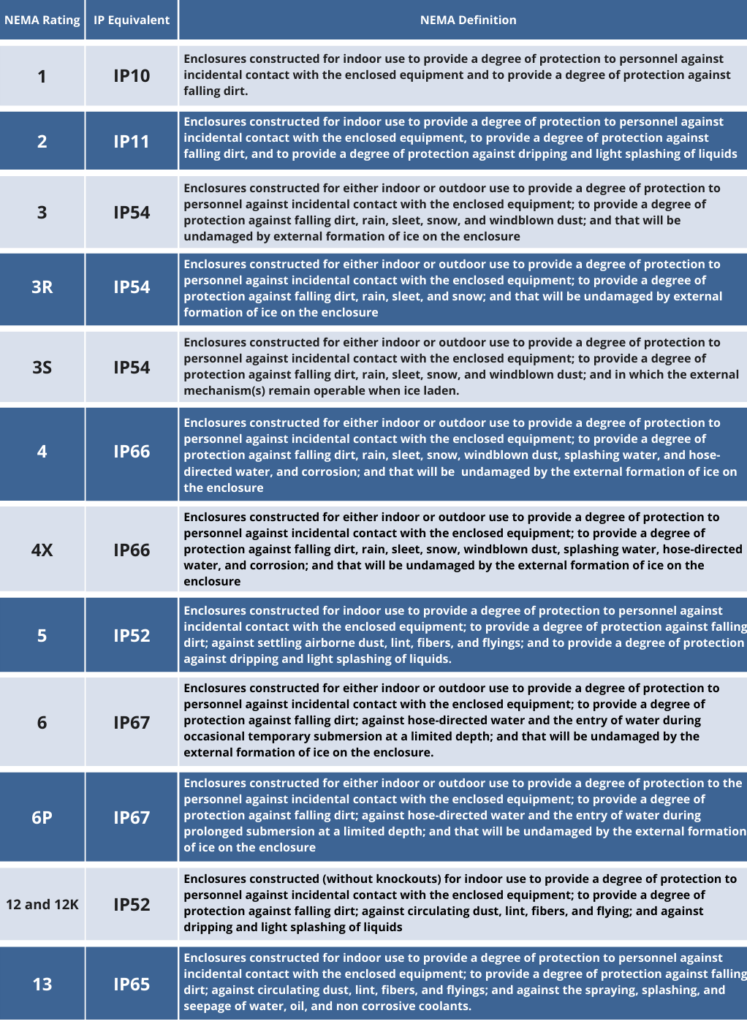What is a ‘Rugged or Ruggedized Device’?
A rugged device is one that is capable of withstanding rough handling and operates reliably in harsh usage environments such as strong vibrations, extreme temperatures and wet or dusty conditions.

The terms rugged, drop tested, splash proof, water resistant or waterproof are basically just marketing terms. They don’t actually mean anything without context.
So how can you tell how ‘rugged’ or ‘waterproof’ a device really is?
IP Rating (International Protection Rating)
The IP rating, (aka international protection rating or ingress protection rating) is a two digit number (e.g. IP65) which classifies the protection provided by the case of a device against solids and liquids. The first number relates to solids, the second to liquids.
The rating ranges from 1-6 for solids and 1 to 8 for liquids. This rating is used to provide more accurate information about the protection level of a device rather than the usual marketing terms such as waterproof or water resistant.
The tables below give an explanation of the protection level each number represents:

The iPhone 7 and iPhone 7 Plus are the first Apple smartphones to come with IP ratings. They are rated IP67 meaning that they are completely dust tight and capable of surviving in up to 1 metre of water for 30 minutes or less.
The Samsung Galaxy S7 boasts an IP68 rating also meaning that it’s completely dust proof but this model can survive in up to 5 feet of water for up to 30 minutes.
NEMA (National Electrical Manufacturer Association)
NEMA ratings are standards that are useful in defining the types of environments in which an electrical enclosure can be used. This rating system is defined by the National Electrical Manufacturer Association, and frequently signifies a fixed enclosure’s ability to withstand certain environmental conditions.

Below is a table which shows the NEMA rating and definition along with its equivalent IP rating:

The correlation between NEMA ratings and IP ratings are limited to dust and water. NEMA includes more stringent testing requirements to verify the protection from corrosive materials, external ice, oil immersions as well as dust and water. NEMA ratings are rarely applied to mobile devices as these stringent testing requirements are seldom needed.
Note that the comparison tablet above can only be used to convert NEMA ratings to IP ratings, but not vice versa.
MIL-STD (Military Standard) or MIL-SPEC (Military Spec)
The MIL_STD or MIL-SPEC is a series of guidelines established by the U.S. Department of Defense. It sets specific performance and manufacturing requirements for all types of equipment including Android devices.
MIL-STD-810G is the particular standard concerning rugged Android devices. It includes a large list of tests carried out in labs to simulate certain environmental variables including temperature extremes, low pressure (altitude), thermal shock, fungus(yes fungus…) and being frozen to name a few.

The problem with MIL-STD-810G compliance is that it can be misleading. There is no central body meaning companies can come up with their own versions of the tests to meet the standards.
It was explained by Dr. Conrad H Blickenstorfer like this:
“The MIL-STD-810G does not mandate standards or set minimum goals for the various tests; for the most part it simply describes how testing is to be conducted. This leaves considerable room for interpretation, and it is therefore important for manufacturers of rugged notebooks to provide detailed information on what tests were conducted, how exactly they were conducted, what the results were, and what those results actually mean. The claim that a product is “MIL-STD-810G tested” is not enough, and prospective customers should ask for more detail.”
Whether you are purchasing or selling a rugged device it is important to understand exactly what the terms and rating specifically mean. Just because a product is labeled as being waterproof doesn’t mean you can go deep sea diving with it or if it’s labeled as being rugged it doesn’t mean it will survive being smashed by a hammer.
Next month I will take a look at some of the tests that are carried out on these devices in order for them to earn their ratings.
If you have any questions on this or any other topic we have covered please let me know in comment section below.As usual -> Hope this helps and that you enjoy!Garry @ Hatch PS: If there is any topic you’d like me to cover just send me an email or a tweet.


